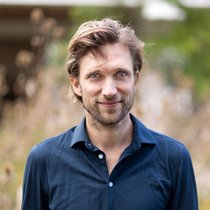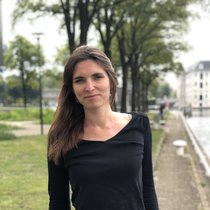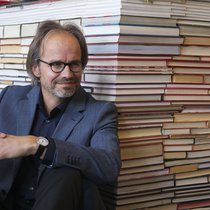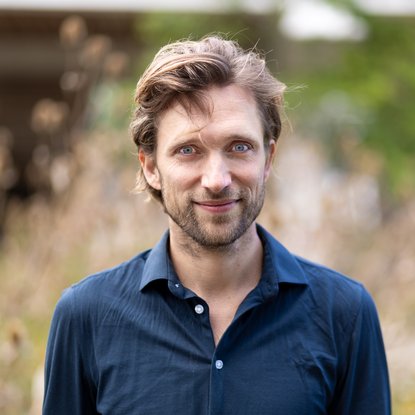Amsterdam 100% circular by 2050
The City of Amsterdam wants to be fully circular by 2050. That means that everything we use on a daily basis – from coffee cups to building materials – must consist of materials that have already had a previous life.
When it comes to household waste – this consists of, among others, vegetable, fruit and garden waste, paper, glass and textiles – the City has a duty to collect and process this. To give you an impression, the total household waste came down to about 380kg per year per person.
When comparing the amount of household versus company waste produced in the Amsterdam Metropolitan Area (AMA), still only 11% is household related, whereas 89% is company waste – such as sludge, scrap metals, wood and scrap lumber and very dedicated to the company processes related waste flows.
“When it comes to company waste, companies are responsible to conclude contracts with commercial third parties to collect and process large quantities of company waste – either for recovery or final disposal like shredding, landfill or incineration.”
High waste transportation numbers and a loss of good products
The B2B contracts between (commercial) parties to collect and process industry waste often result in a lot of trips and shipments of huge amounts of waste. A company in Amsterdam could have its company waste exported to and treated by another company located far outside the AMA, or even abroad.
These company waste materials, as compared to consumer waste flows, often enter the waste flow in relatively good condition. This holds for instance for glass and wood, which are suitable for making window frames. If managed differently, these used materials in company 'waste' flows could be directly integrated at the start of the design process of new products.
So… How to boost the efficient re-use of company waste materials within the AMA? Geographically located waste flow data form an important part of the answer.
Making waste and resource flows transparent
As you can imagine, one of the crucial steps in the process of re-using company waste materials, is for these waste and resource flows to be known publicly. The good thing is that large data sets already exist in European countries. Based on EU rules and regulations, companies that produce, transport or treat waste are obliged to, among others, report the amount and type of waste.
So far, this data has been used mostly for control and enforcement purposes. In the Netherlands, LMA (Landelijk Meldpunt Afvalstoffen) has agreed to grant TU Delft access to the data and reveal its potentials for the Circular Economy, while at the same time complying to GDPR laws. The resulting potential has proved to be tremendous.
“It might seem straightforward, but it is hard to connect the dots. There is plenty of quality company waste available, yet it quickly moves out of sight. The new monitoring tool developed by researchers from AMS Institute and TU Delft, geoFluxus, can lead the way.”
Joppe van Driel
Team lead Program Development Team, Program Developer
geoFluxus: Turning data into comprehensible maps and graphs
This is where the open-source monitoring platform geoFluxus proved to be of great value. geoFluxus is a startup that came out of the EU H2020 research project REPAiR (Resource Management in Peri-urban Areas) and CINDERELA (New Circular Economy Business Model for More Sustainable Urban Construction) project. REPAiR project is led by TU Delft researchers Alexander Wandl and Arjan van Timmeren, and uses and expanded the GeoDesignDecision Support Environment (GDSE) tool developed in REPAiR.
REPAiR focused on mapping two main wast flows in 6 European countries. In the Netherlands, for the AMA these were the flows of food waste as well as construction and demolition waste. In continuation, EU H2020 project CINDERELA uses this GDSE tool to map the construction and demolition waste flows in 6 other regions, while at this moment working on adding new components to the tool, like for instance an extended LCA (Life Cycle Analysis).
With geoFluxus, incomprehensible waste data tables – including a.o. import and export and treatment methods – are converted into comprehensible maps and graphs. This is extremely valuable for spatial strategies in many other cities world-wide, and therefore TU Delft researchers Rusne Sileryte and Arnout Sabbe have founded the like-named spin off company geoFluxus, which has recently gone through a Arcadis City of 2030 Accelerator powered by Techstars.
“Dozens of criss-crossing lines show how wasted resources flow in and out different regions in Europe. Besides getting a beautifully looking map, you can actually select specific materials, and then zoom in right down to address level to find the companies that produce or treat them.”
Rusne Sileryte
Co-founder & CTO at geoFluxus
Next to mapping waste, the geoFluxus team has connected open EU data on GHG emissions to the mapped waste flows by using transport, economic sector and waste treatment statistics. The resulting tool can provide governments with data evidence on what economic sectors, materials and locations hold the highest potential not only for waste reduction but also reductions of carbon emissions. Governments can use the tool to monitor progress towards circularity.
“The monitoring dashboard for the circular economy and the underlying dataplatform will become a powerful tool for cities in the transition towards a circular economy. It will allow us to better understand goods the city uses and what environmental impact these goods have. With this data driven approach cities will make informed decisions in the complex process of becoming circular.”
Juan-Carlos Goilo | Senior Information Specialist | City of Amsterdam

One company’s waste could be another one’s gain
The insights on the waste data generated by geoFluxus enable users to develop and test the impact of spatial strategies, for very specific locations, before actually implementing them. In addition, geoFluxus takes on a “match making” role: to have companies select company materials from other actors close by to re-use these instead of transporting the materials for waste treatment outside the AMA.
Take the example of wood-based waste: 79.352 tons of waste predominantly containing wood have been exported from the AMA to other regions in 2018. This added up to a total number of 9.586 trips of waste trucks – which comes down to at least 331.139km. Most of this wood waste was exported to other regions to be degraded by being shredded or cut (63%) and stored (temporarily) (25%).
Wood 'waste' flows in the Amsterdam Metropolitan Area (AMA) ©geoFluxus
Impact of all the waste produced in the Amsterdam Metropolitan Area on the Dutch road network. For each part of the road network and how much CO2 was emitted by waste transport. ©geoFluxus
“To illustrate, housing renovation company Hemubo was looking for locally available hardwood planks to produce window frames and crushed glass to produce windows. Using geoFluxus, Hemubo could locate 5842 tons of A class wood in the AMA. This amount of wood is sufficient to produce frames for 172160 windows saving €4.536.416 of raw material costs.”
“Normally, A class wood is incinerated and produces 3.5 kt of CO2, of which 77% can be avoided by producing window frames.”
Rusne Sileryte
Co-founder & CTO at geoFluxus
Accelerating circularity in the AMA
The open-source monitoring tool developed in REPAiR and CINDERELA, and deployed by geoFluxus allows us to make these flows visible and match them to the needs of other companies helping to close the loop from a linear society into a circular one. Together with the City of Amsterdam, geoFluxus already conducted a circular economy baseline measurement with regard to construction and demolition waste for the AMA.
Hence, with the tool, materials and products that have become somebody’s waste can still be brought back into the (local) market instead of being released into the environment after travelling many kilometers. Instead of exporting wooden sleepers to be shredded outside the AMA, they can be better shaped into circular window frames to renovate houses in the AMA.
“Local and regional authorities in both Europe and the United States can't wait to start using geoFluxus.”
Arjan van Timmeren
AMS PI & Professor Environmental Technology & Design (TU Delft)
“Local information needs are included for each metropolitan region. For Amsterdam, this means we have mapped construction and demolition waste flows, while for Naples the priority was on the transformation of polluted land. The tool gives at-a-glance information about where the causes and consequences can be found.”
Dr. Alexander Wandl | Environmental Technology & Design | TU Delft
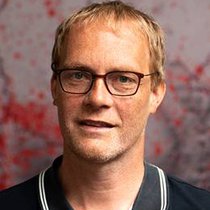
All in all, next to improving circularity, the number of trips to and from the AMA could also be reduced, thus reducing environmental impact. This way, more sustainable resource chains can be designed that accelerate circularity and a more liveable society.
Who knows? In the near future we all might be looking through window frames built from company waste materials.
The REPAiR and CINDERELA projects have received funding from the European Union’s Horizon 2020 research and innovation programme under grant agreement No. 688920 and No. 776751.
In 2019 Arnout Sabbe and Rusne Sileryte joined ClimateLaunchpad in 2019 to convert part of their research into a startup, called 'geoFluxus: we map waste'. After ClimateLaunchpad they were selected for the Techstars-Arcadis program.
In 2020 geoFluxus became the winner of the EU Datathon 2020 European Green Deal challenge as the most promising open-source application that valorizes European datasets. Keep track of this innovative solution: geofluxus.com
Excited to learn what else we do to accelerate circularity in our cities? We've selected these reads for you:
